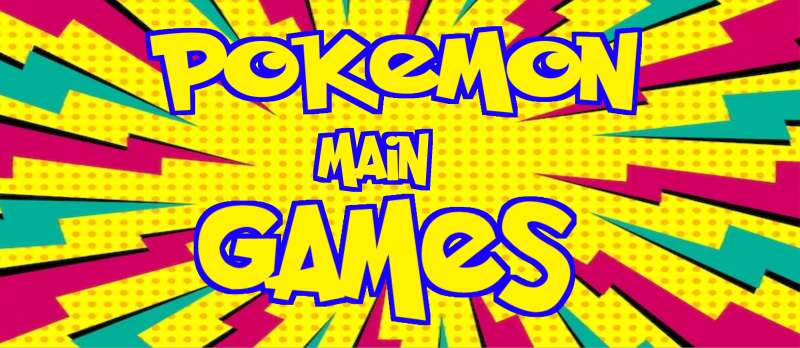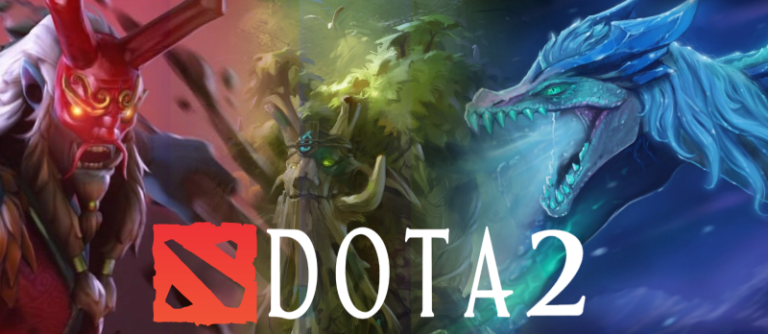How Pokémon Main Games Have Evolved Over the Years

Pokémon and the Pokémon Main Games is a highly influential and beloved franchise created by Satoshi Tajiri and Ken Sugimori, first launched by Nintendo, Game Freak, and Creatures in 1996. The franchise began with Pokémon Red and Green for the Game Boy and has since expanded into a global phenomenon encompassing video games, trading card games, television shows, movies, and various merchandise. Pokémon’s core concept revolves around players capturing, training, and battling fictional creatures called Pokémon. The franchise’s appeal lies in its imaginative world, strategic gameplay, and its ability to engage players of all ages. Similarly, Teen Patti Stars offers an engaging and immersive experience in the realm of card games, captivating players with its unique features and exciting gameplay.
The significance of Pokémon in gaming extends beyond its commercial success; it has become a cultural icon, shaping the way game developers approach the RPG genre. The franchise has introduced innovative gameplay mechanics, storytelling techniques, and social interactions through its various mediums, creating a lasting impact on the gaming industry.
Early Beginnings of Pokémon Main Games
The Pokémon Main Games have evolved significantly since their inception, reflecting technological advancements and shifting consumer preferences. The early installments set the foundation for what would become a globally recognized franchise.
The Origin and Development
The journey of the Pokémon Main Games began with the release of “Pokémon Red and Green” in Japan in 1996. Developed by Game Freak and published by Nintendo, these titles were the first entries in the series, introduced by Satoshi Tajiri and Ken Sugimori.
The initial concept of Pokémon was influenced by Tajiri’s childhood interest in collecting creatures and his fascination with nature. This vision was realized with the creation of the Pokémon universe, where players could catch, train, and battle fictional creatures known as Pokémon.
- Game Development: The original games were developed for the Game Boy, with a focus on integrating the Game Link Cable for trading and battling Pokémon between players.
- Innovation: The idea of capturing creatures and training them to battle each other was innovative for its time, combining elements of adventure, strategy, and social interaction.
Key Features and Gameplay Mechanics
The early Pokémon Main Games featured several defining elements that would become staples of the series.
- Catching Pokémon: Players could capture Pokémon using Poké Balls and add them to their collection. Each Pokémon had unique abilities and stats, which influenced their performance in battles.
- Battling Mechanics: Turn-based battles allowed players to use their Pokémon’s abilities strategically to defeat opponents. The games introduced the concept of type advantages and disadvantages, adding depth to the combat system.
- Exploration: The game world was expansive for its time, featuring various routes, towns, and cities to explore. Players could interact with non-playable characters (NPCs) and uncover hidden items and secrets.
Evolution and Expansion
The success of the original Pokémon Main Games led to the development of subsequent titles that expanded the series.
- Pokémon Yellow: Released in 1998, this version was a slight variation of the original games, featuring Pikachu as a starter Pokémon and incorporating elements from the Pokémon anime.
- Pokémon Gold and Silver: These titles, released in 1999 and 2000 respectively, introduced new Pokémon, a new region to explore, and enhanced gameplay mechanics. The addition of a day-night cycle and breeding mechanics added new layers to the game.
Innovations and Impact
The early Pokémon Main Games had a profound impact on the gaming industry and popular culture.
- Social Features: The ability to trade and battle Pokémon with other players fostered a strong community and social aspect. The games encouraged player interaction through trading and competitive battles.
- Cultural Phenomenon: The success of the games contributed to the rise of the Pokémon franchise, including an animated series, trading card game, and merchandise. The franchise became a significant cultural phenomenon worldwide.
Evolution of the Franchise
As the Pokémon Main Games continued to evolve, they introduced new mechanics and features that built on the foundation laid by the early titles.
- Graphics and Technology: Subsequent games improved graphics and utilized more advanced hardware, leading to richer and more immersive game worlds.
- Game Mechanics: New gameplay mechanics were introduced, such as Mega Evolutions and Dynamaxing, which added complexity and variety to the battle system.
Continued Popularity and Legacy
The early Pokémon Main Games remain a significant part of the franchise’s history and have influenced many aspects of modern gaming. The original games’ design principles continue to shape the development of new titles in the series.
- Legacy: The impact of the early games is evident in the continued success of the franchise and its enduring popularity among players of all ages.
- Ongoing Development: The franchise has expanded beyond the main games, including spin-offs, mobile games, and an ever-expanding universe of media.
For more in-depth information about the evolution of Pokémon Main Games, visit our site to explore detailed articles and resources.
Explore the rich history of Pokémon Main Games and see how the franchise has developed over the years. Download the latest games or visit our site for comprehensive guides and updates.
Understanding the early beginnings of the Pokémon Main Games provides valuable insight into how the series has grown and adapted over time. The foundational elements established in the original titles have set the stage for the ongoing evolution of the franchise, continuing to captivate and engage players worldwide.
Expanding the Pokémon World
The evolution of the Pokémon Main Games has not only enhanced gameplay but also broadened the Pokémon universe. As new generations of games are released, the world of Pokémon has expanded in terms of geography, lore, and interaction. This expansion is a key aspect of the series, reflecting the growth and diversification of its fan base and the game’s development. Similarly, Car Roulette showcases how game design evolves, offering new dimensions of gameplay and interaction that captivate a diverse audience.
Geographical Expansion in Pokémon Main Games
One of the most notable expansions in the Pokémon Main Games is the introduction of new regions. Each region is a distinct geographic area within the Pokémon world, often inspired by real-world locations. For example, the Kanto region, introduced in the original Pokémon games, was inspired by the Kanto region in Japan. Subsequent regions, such as Johto, Hoenn, Sinnoh, Unova, Kalos, Alola, and Galar, have continued this trend, drawing inspiration from various parts of the world. This geographical expansion allows players to explore diverse environments and encounter different Pokémon species that are unique to each region.
Bullet Points
- Kanto Region: The original setting introduced in Pokémon Red and Blue.
- Johto Region: Featured in Pokémon Gold and Silver, it added new cities and Pokémon species.
- Hoenn Region: Seen in Pokémon Ruby and Sapphire, known for its tropical climate and unique geography.
- Sinnoh Region: The setting for Pokémon Diamond and Pearl, characterized by its mountainous terrain.
- Unova Region: Introduced in Pokémon Black and White, inspired by New York City.
- Kalos Region: Featured in Pokémon X and Y, based on northern France.
- Alola Region: Shown in Pokémon Sun and Moon, influenced by Hawaii.
- Galar Region: The setting for Pokémon Sword and Shield, modeled after the United Kingdom.
To explore the detailed geography of each Pokémon region, visit the official Pokémon website or download the latest Pokémon game to experience the expansive world firsthand.
Introduction of New Pokémon Species and Types
The expansion of the Pokémon Main Games also includes the introduction of new Pokémon species and types. Each new generation typically adds a variety of Pokémon, contributing to the diversity of creatures available for capture and battle. Alongside new Pokémon, new types are introduced, which influence battle strategies and game mechanics. For instance, the introduction of Fairy-type Pokémon in Generation VI provided new dynamics in battles, altering type advantages and weaknesses. These additions not only enrich gameplay but also expand the Pokémon world’s complexity.
- New Pokémon Species: Each generation introduces numerous new Pokémon, expanding the Pokédex.
- New Types: New Pokémon types are introduced to add depth to battle mechanics (e.g., Fairy type in Generation VI).
- Regional Variants: Some Pokémon have different forms depending on their region (e.g., Alolan forms in Generation VII).
- Legendary and Mythical Pokémon: Unique Pokémon that often play central roles in the game’s lore.
For a comprehensive list of new Pokémon species and types, visit the Pokémon database or explore the latest Pokémon games for a firsthand look at these additions.
The expansion of the Pokémon Main Games through geographical and species diversity reflects the series’ ongoing evolution and appeal. As each new generation introduces novel elements and enriches the Pokémon world, it continues to captivate both new and veteran players. The continual growth of the Pokémon universe ensures that the games remain dynamic and engaging, offering fresh experiences with every installment.






